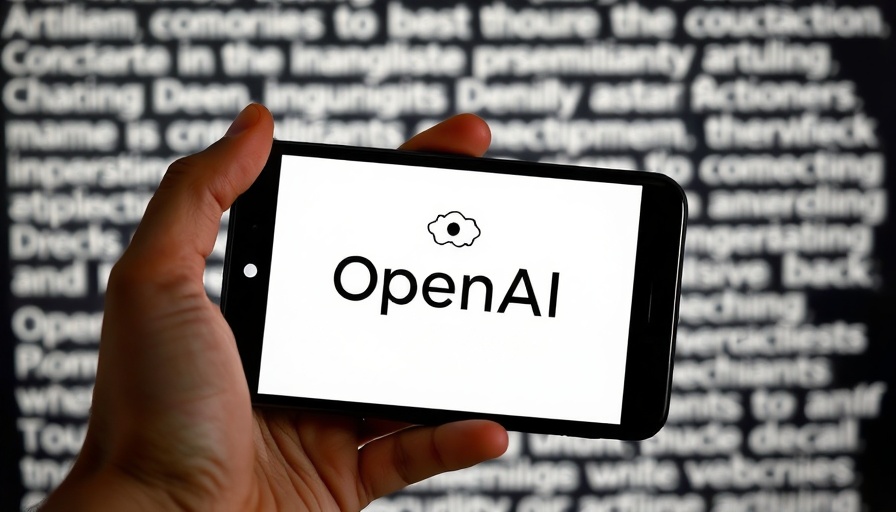
The Controversial Landscape of AI and Copyright
The recent ruling involving OpenAI and major newspapers reveals a brewing tension at the intersection of artificial intelligence (AI) and copyright law. As the digital landscape evolves, the methodologies of AI technologies—especially language models like ChatGPT—are under scrutiny regarding how they utilize existing content. The crux of the issue lies in whether the data sourced from newspapers, like The New York Times, can be considered fair use or constitutes infringement of copyright. The plaintiffs argue that OpenAI's techniques effectively siphon off invaluable journalistic work, creating a significant competitive threat to traditional news organizations that heavily rely on their intellectual property to sustain their business models.
What This Ruling Means for the Future
U.S. District Judge Sidney Stein's decision allows most of the lawsuit claims to proceed, sending a clear signal that the courts are taking the concerns of the media seriously. Allowing the bulk of the case to move forward could signify a transformative moment for both AI development and copyright enforcement, raising questions about how emerging technologies can respect creators' rights. The potential for a jury trial adds a layer of uncertainty; the outcome could set precedents that define the use of corporate content in training AI systems across various sectors.
The Broader Implications for Journalists and Media Entities
As media companies increasingly turn to litigation to protect their copyrights, this case exemplifies a pivotal moment within the journalism industry. Frank Pine, an executive at MediaNews Group, stated that the allegations reflect severe damage inflicted by companies misappropriating creative work. If successful, this lawsuit could embolden others in the industry to pursue similar claims, potentially reshaping the dynamics between technological innovation and content rights.
Exploring the Fair Use Doctrine
OpenAI has defended its practices by claiming that it operates under the principles of fair use. The fair use doctrine allows limited use of copyrighted material without permission from the rights holders, typically for purposes like commentary, criticism, and education. However, the scale at which AI models utilize content poses complex questions. Critics argue that even a practice grounded in fair use must balance innovation and respect for original authorship. As AI continues to advance, the ongoing dialogue about fair use and copyright will be crucial for fostering an environment that supports both innovation and creativity.
Emergence of a New Legal Landscape
The evolving legal landscape surrounding AI will likely have long-lasting ramifications. With prominent media companies leveraging the court system to challenge tech juggernauts, a new era of relations between technology developers and content creators may emerge. The outcomes of lawsuits like this one could force tech companies to reassess how they source and utilize content, as they navigate the fine line between technological advancement and legal compliance.
What Consumers Should Know
For the average consumer, these legal battles are about more than just media and technology; they signal a larger conversation about intellectual property in the digital age. As AI technologies become increasingly integrated into everyday life, consumers should be aware of the potential impacts on journalism and content creation. The outcome of this lawsuit could affect the availability of information, the diversity of news sources, and ultimately, how news is reported and consumed.
As we witness the collision of copyright and artificial intelligence, this ruling encapsulates a pivotal moment in defining the future of content usage in tech. Understanding these implications will be essential for anyone who consumes, creates, or responsibly engages with technological advancements.
 Add Row
Add Row  Add
Add 




 Add Row
Add Row  Add
Add 

Write A Comment